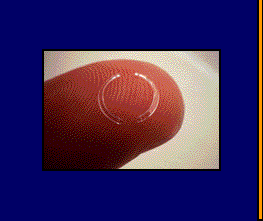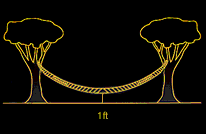-
Arc Shortening Theory 
KeraVision Intacs™ corneal ring segments for Myopia (formerly known as the KeraVision® Ring) are designed to correct nearsightedness (or myopia) by flattening the curvature of the cornea. Their effect can be illustrated by the "arc shortening theory."

The theory can be illustrated by a rope suspended between two trees. Gravity exerts pressure on the rope. The rope will hang close to the ground between the two trees. When objects are inserted into the strands of the rope near both ends, the rope flattens because its length is shortened. As a result, its arc is shortened and the distance between the ground and the rope is greater.
Just as the rope is connected to the trees, the cornea is connected at two points to the lamellae. Intraocular pressure on the cornea can be compared to gravitational pressure on the rope. By inserting objects between layers of corneal stroma, the cornea's arc is shortened and flattening occurs in the center of the cornea.
This arc-shortening is what produces the flattening effect in both the rope and the cornea.

During a brief surgical procedure, KeraVision Intacs for Myopia are inserted into a tunnel created between layers of stromal tissue.
Different Intacs thicknesses are designed for different results--the thicker the Intacs, the greater the flattening effect and intended correction.
After insertion, KeraVision Intacs are designed to remain permanently in place without maintenance, yet can be removed by a surgeon.